|
||||||||||||||||||
|
I next turned my attention to the chassis. The first thing to do here was fit the rubber feet.
Next the mains socket was fitted - the hole needed to be filed slightly to remove the paint from either the top or bottom of the hole (I chose the top) because the thickness of the paint made it difficult to fit otherwise. There's just a fraction of a milimeter to remove.
Now, although the mains wires are provided with spade connectors, I chose to solder all such connectors.
I began by fitting two sets of wires to the switch before it was fitted into place to make it easier to solder (getting the correct angle etc). Obviously this would make it difficult to get through the hole in the chassis so I oriented the two sets of wires at different angles that would make it possible to fit the soldered switch through the hole once finished.
 Leads soldered onto the mains switch. |
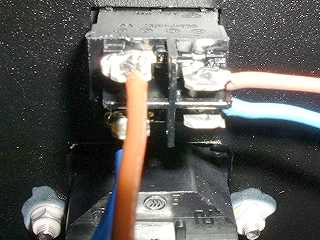 Mains switch now fitted to the chassis. |
Next, the switch is wired to the mains socket.
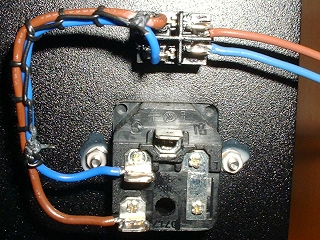 I laced the leads to give them rigidity so they would stay where they were put. |
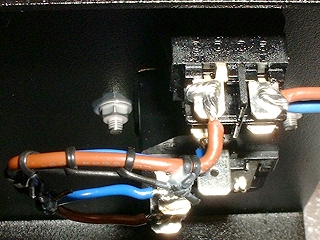 Another view, this time from the top. |
Fitting the choke and mains transformer
Now it was time to fit the choke and transformer into position.The choke was a little tricky as I could not find four corresponding holes. I chose a slightly different orientation from that used in the manual which allowed me to mate with three holes successfully. One of these was actaully a venting slot that needed to be filed very slightly to take the hefty bolts that were provided for the job (I like hefty).
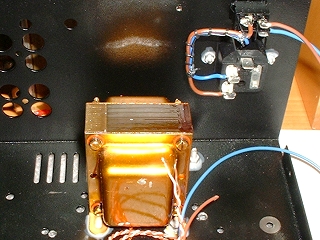 First the choke was fitted. |
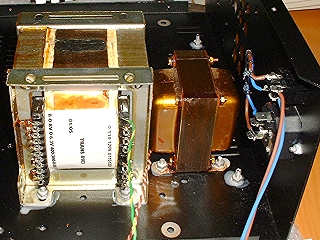 Then the mains transformer. |
The mains transformer was no problem at all to fit. The terminals on the right of the mains transformer are those of the primary - these must be wired to correspond with the mains voltage applicable to your country (240v in my case).
The terminals on the left are the various secondary taps of the transformer. More on those later.
Wiring up the Primary
Now it is time to complete the mains wiring by wiring up the transformer's primary. The wiring shown here is for 240v operation.In addition, we have two earth connections to make; one from the mains input socket and a screen from the transformer itself. The earth tags have not yet been tightened as they will eventually be joined by another earth lead from the secondary. It is very important to follow the instructions precisely when it comes to wiring ground wires because part of the design takes this into account to reduce the chances of earth loops which would produce hum.
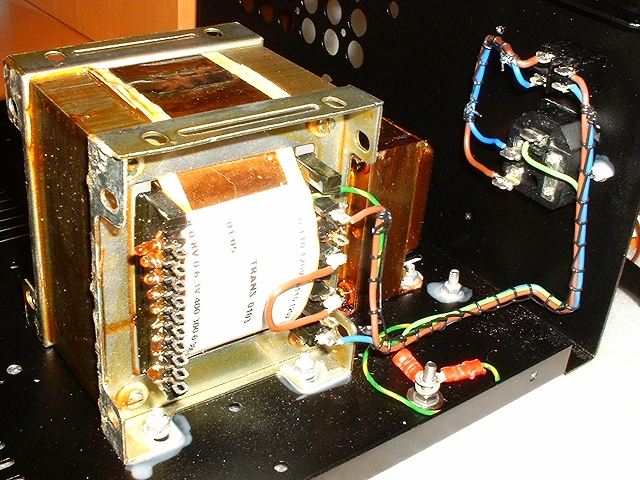
|
|
